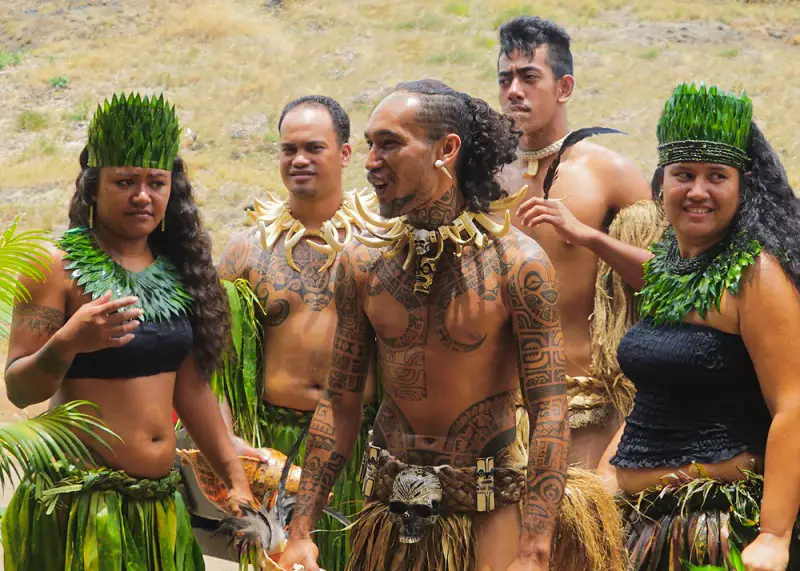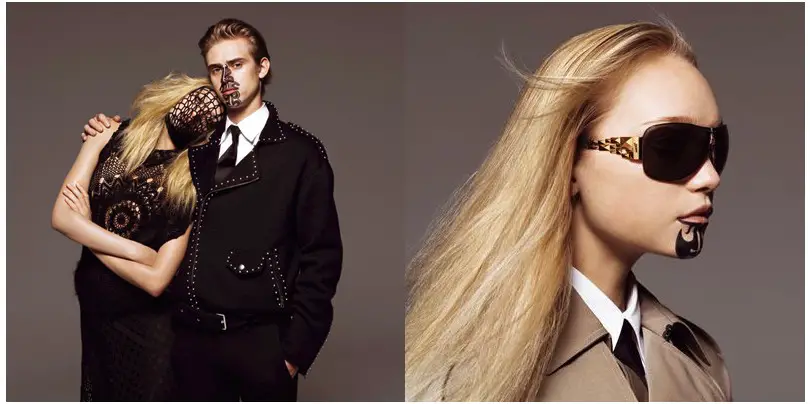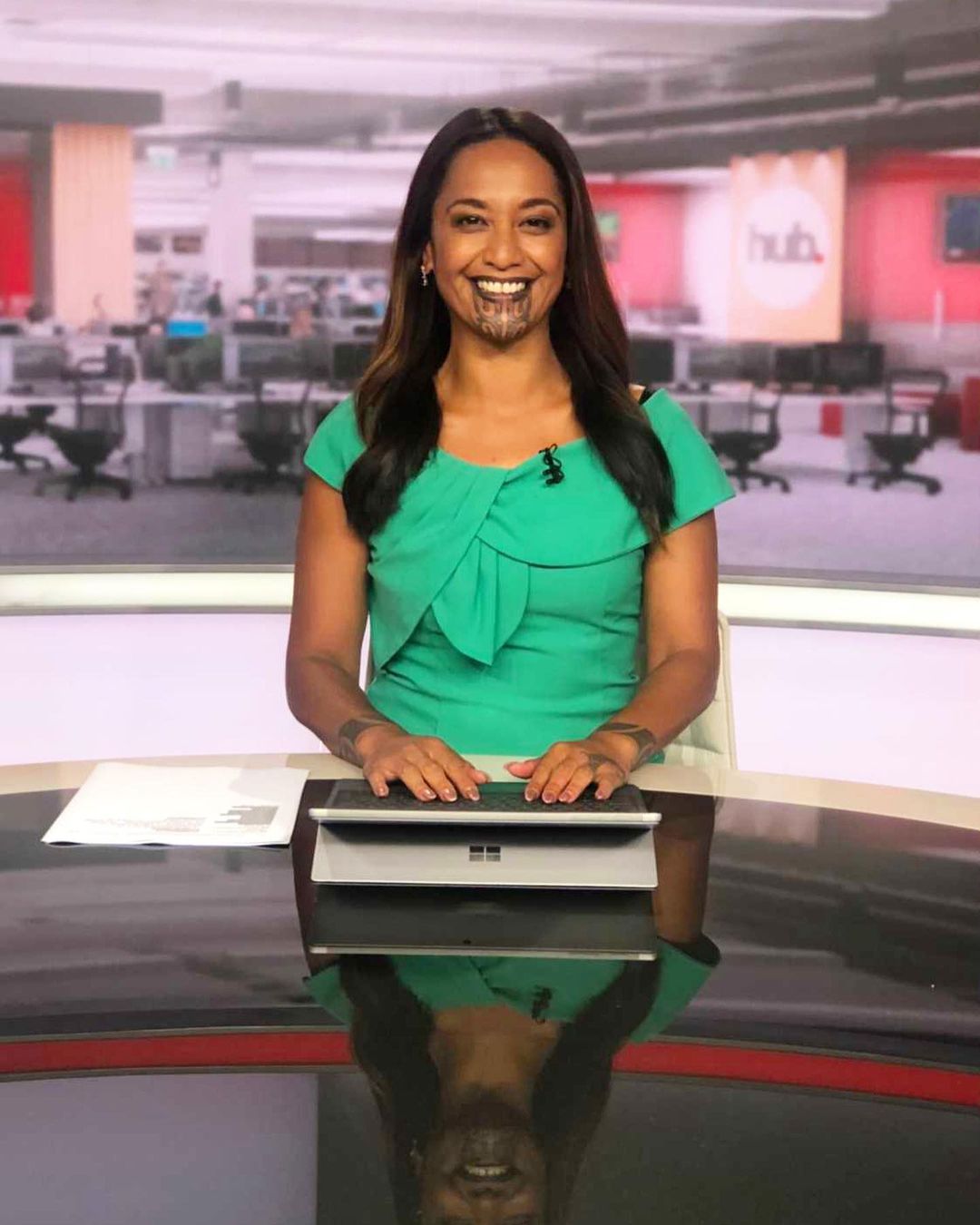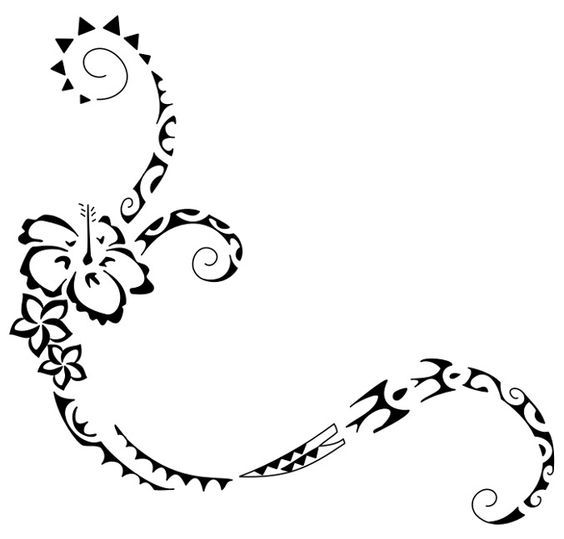Maori Tattoos: A Detailed Insight Into Cultural Background and Meaning of Maori Tattoos
[ad_1]
Getting to know the history of specific tattoos is essential in one’s research for the perfect tattoo design. The origin of a tattoo, its cultural and historic background, as well as meaning can truly affect one’s decision, especially when it comes to cultural appropriation and similar issues regarding cultural tattoos.
Maori tattoos are some of the most popular tattoos. However, many aren’t even aware that the tattoos they’re getting belong to a culture and tradition, and unaware of such important information, commit cultural appropriation. Other, despite knowing about Maori tattoos, still get the cultural design and claim ownership, which is truly minimizing the Maori culture and tradition.
Luckily, an increasing number of people are getting more and more education about different tattoo cultures as well as the origin of specific, traditional tattoo designs. However, there’s always more to learn, which is why we’ve decided to provide an in-depth insight into the cultural background and meaning of Maori tattoos. So, without further ado, let’s get started!
Maori Tattoo: The Definitive Guide to Ta Moko
The Origin

Maori tattoos, properly referred to as moko tattoos, as a form of facial and body art originating in New Zealand. Centuries before the arrival of European travelers, the Maori people were known as fighters and defenders of their land, often getting facial and body tattoos to symbolize their devotion and willingness to protect their land and tribe, as well as their status, rank, and virility.
Maori people were generally fishermen, seafarers, and highly skilled navigators. They were also highly skilled in pottery, building canoes, plant-growing, animal-hunting, and so much more.
Of course, the Maori people were incredibly talented when it comes to tattooing. The moko tattoos are believed to originate from Maori mythology and the story of the underworld princess Niwareka and a young man named Mataora.
Niwareka was abused by Mataora, after which she left him and returned to the underworld. Mataora decided to go look for Niwareka; during his journey, his face paint was smeared and his whole appearance was under much ridicule. Nevertheless, Mataora has found Niwareka, who accepted his apology. As a gift, Niwareka’s father taught Mataora how to do moko tattoos, so that his face paint never smears again.
From this story, we can conclude that the Maori people practiced certain types of body art long before the moko tradition. Many believe that the tradition of the face and body art spread from other Polynesian islands.
The world found out about the Maori people thanks to the Europeans. However, this wasn’t a lucky encounter between two different cultures. Europeans, as usual, saw an opportunity of taking over the New Zealand land as well as over the Maori people. However, this time around, Europeans were mesmerized by the appearance of the Maori people, mostly because of their facial and body tattoos. Their fascination was so powerful that they started killing Maori people and taking their heads back home as souvenier. The Maori people even had to stop practicing moko tattoos in fear of the white ‘head hunters’.
The Meaning
When it comes to the meaning of the moko tattoos, they usually represent one of these things; rank, status, tribe, virility, and for women, status and rank. Moko tattoos generally represent the identity of the wearer, as well as essential information regarding their position in the tribe. The moto tattoos are generally based on certain ritual significance to the Maori people, which is represented using spiral and curvilinear patterns.
Depending on the placement of the moko tattoos, they can have different meanings and symbols. For example;
- If the tattoo is positioned around the brows, it symbolizes one’s position in the tribe.
- If the tattoo is placed around the nose and the eyes, it symbolizes the Hapu rank (chief of the tribe).
- A tattoo placed on the center of the forehead symbolizes one’s rank.
- A tattoo placed under the one is a signature type of tattoo.
- If a tattoo is placed in the cheek area, it symbolizes work.
- A tattoo placed on the chin symbolizes Mana (status, influence, spiritual power, prestige, authority, control, and power).
- And, a tattoo placed on the jaw symbolizes one’s birth status.
Despite many associations of moko tattoos with intimidation and aggression, as we can see, the meaning of these tattoos couldn’t be farther from that. These tattoos are specifically used to help identify and get essential information about a Maori person just by looking at them.
The tattoos are a means of recognition, especially if people meet for the first time. It is by no means something Maori people use for aggression and intimidation, as it is often believed, due to their ancestral origin and ancient lifestyle, and the way it was perceived by the Westerners.
The Europeans mainly believed Maori people got to face and body tattoos to either intimidate their opponent in a battle or to attract women. There are also interpretations of the moko tattoos as being symbolism of war, cannibalism, and sex. Of course, the more people learned about Maori, the more we got to understand the Maori culture and tradition, as well as the background and the meaning of moko tattoos.
Unfortunately, even nowadays some people stereotype the Maori culture and the moko tattoos. Nevertheless, an increasing appreciation of the unique and breathtaking moko tattoos shows how we, as a society, are starting to respect other people’s cultures and not just recklessly use their culture and slab it on our bodies for the sake of just having a cool tattoo.
The moko tattoos aren’t just a set of lines brought up into an interesting pattern. These tattoos represent the people’s identity, history, culture, tradition, set of beliefs, and so much more.
The Modern Moko Identity
Moko, widely referred to as tribal tattoos nowadays, has been culturally affected by modern interpretations and cultural appropriation, mostly by Westerners. Despite awareness and information available just one click away, some people still remain uneducated about moko and Maori people or are simply intentionally blind to the cultural significance of moko.
Unfortunately, people, unrelated to the Maori tribes, still get moko tattoos, and still use moko tattoos in fashion and design to show ‘how inclusive and welcoming they are of different cultures’.
For example, in 2008/2009, the globally acknowledged French designer Jean Paul Gaultier used non-Maori models with moko tattoos to promote his latest collection. Naturally, many deemed this choice of models highly offensive, especially in an image where a female model with moko posed sitting with her legs open.

Now, Gaultier tried to explain himself saying that he finds the Maori culture wonderful and exotic and that he wished people in his country would recognize the same beauty (by hiring non-Maori models wearing his clothes and glasses, of course). Let’s be real; moko, in this context, is just a fashion statement and a way to grab the public attention.
Furthermore, the problem arises when there is actually a Maori arts bord in New Zealand responsible for the fair use of the trademarked moko and Maori arts and crafts. Had Gaultier contacted them prior to the engagement of moko in his collection, this would have been a different story. But, he hasn’t. And, guess how the Maori people felt about this; they felt disrespected.
Now, let’s fast forward to 2022. On Christmas Day in 2021, veteran New Zealand, Maori journalist Oriini Kaipara made history by becoming the first news anchor to host a national primetime broadcast while sporting a moko tattoo on her chin.

Twenty, or thirty years ago, this wouldn’t have been possible, but Kaipara did it and made headlines across the globe. People have found out about this in January 2022, and have celebrated the way we now embrace different cultures and respect the markings, as well as Kaipara’s courage to stand in front of cameras, proudly.
So, things have changed a lot in the 15 years and surely will change even more. Cultural appropriation has become a big deal in the past few years, with people finally getting sensitive to blatant cultural appropriation, lack of education, and misinformation about certain cultures and their traditions, especially when used by people of different origins and cultures.
Sure, the Westerners may not be used to people having full facial tattoos, and sure, they can be interested in the moko tradition, but this doesn’t give anyone the right to simply take someone’s culture and turn it into an interesting tribal tattoo. To Maori people, their moko tattoos are sacred, a connection with their past and ancestors, as well as an identity. This shouldn’t be a random person’s tattoo project when the Maori people are trying to desperately protect their culture.
Moko Designs Explanation
To better understand the cultural and traditional background and meaning of moko tattoos, it is essential to take a look at moko tattoos individually and explore their meanings.
Te Ora O Maui

This moko tattoo design is based on a legend about Maui. Now, Maui was the youngest out of 5 brothers. When Maui’s mother gave birth to him, she thought he was stillborn. Then, she cut off her bun, wrapped him in it, and threw him into the ocean. Eventually. Maui appeared on the shore, where he was found by a tohanga (an expert practitioner of any skill/art).
Naturally, the tohunga raised Mauri and taught him his ways, who also grew up to master several techniques and skills. Maui is believed to have made days longer, to have brought fire to the people, and almost secured immortality for all humanity. This is generally a story of Maui discovering the land of New Zealand.
Nga Hau E Wha
Translated to English, Nga Hau E Wha means ‘the four winds’.Now, this moko tattoo design represents the four corners of the planet, or the previously mentioned four winds. Actually, the story behind the design is about the four winds representing four spirits all meeting in one place. Many claim the design of four winds represents people from 4 corners of our planet. Because the story behind this design explores the two powerful Maori gods, Tawhirimatea and Tangaroa, the tattoo also showcases the respect toward god in order to grow and prosper in life.
Pikorua

Pikorua is a Maori word for ‘growth’, but also means ‘joining of two completely different things ‘ (like the earth and the sea, as they join in a popular Maori myth). This is the most widespread interpretation of the word’s meaning, mostly because of the story behind the word’s origin, (and the tattoo design origin as well).
The story of human origin in the Maori culture is about Ranginui and Papatuanaku, who are believed to have been together from the beginning of times. Often referred to as Rangi and Papa, they appear in a creation myth about union and separation, where Rangi was the sky father and Papatuanuku was the earth mother.
The tattoo design shows the journey of life and how ‘all rivers lead to the ocean’, which is a metaphor for how we all, as we day, come back to mother Earth.
Te Timatanga
Timatanga, in the English language, means ‘beginning, starting, introduction, and commencement’. Te Timatanga tattoo is a story about the creation of the world, and how humans came to be. The Mauri creation myth follows the aforementioned story of Ranginui and Papatuanaku, or Rangi and Papa. Now, Rangi and Papa had many children.
As they grew up, they sought more independence and freedom. Tumatauenga, in particular, decided to part ways with his parents, so that he can enjoy more freedom, which is a decision all of the brothers tried to follow, except Ruamoko, who was still a little baby at the time. As time went by, the brothers began punishing each other, for either following the idea or opposing it. One would punish the brothers with storms, while others would punish with earthquakes.
Overall, the tattoo symbolizes something all parents experience; taking care of the children until they decide to start their own lives and separate their paths from the path of their parents.
Common Moko Tattoo Symbols
Maori tattoos are not just random lines and patterns, as many think. Each pattern of lines represents certain symbolism and conveys certain information. Let’s take a closer look at the most common moko tattoo symbols and what they stand for;
- Pakati – this pattern symbolizes bravery and strength, and it is characteristic of male tattoos.
- Unaunahi – this pattern symbolizes fish scales, and because Maori people are known to be fishermen, and exceptional ones as well, the tattoos design stands for health and abundance.
- Hikuaua – this pattern originates from the Taranaki region in New Zealand, and it symbolizes prosperity and wealth.
- Manaia – this symbol shows Manaia or the spiritual guardian. The symbol is a combination of a human body, a fishtail, and ahead of a bird. The guardian is the protector of the sky, earth, and the sea.
- Ahu Ahu Mataroa – resembling a ladder, this symbol stands for achievement, overcoming obstacles, and new challenges in life.
- Hei Matau – also known as the fish hook symbol, the Hei Matau is a symbol that stands for prosperity; that is because fish is the traditional food of the Maori people.
- Single twist patterns – symbolizes life and eternity; similar to the Western symbol of infinity.
- Double or triple twist – symbolizes the union of two people, or even two cultures, for eternity. It is one of the most popular Maori symbols of unity; through the ups and downs of life, we stand by each other’s side, which is a wonderful message.
- Koru – this spiral-like symbol stands for growth, harmony, and new beginnings. It is taken from the symbolism of an unfurled fern leaf (New Zealand is known to have the most beautiful ferns, which makes this tattoo even more meaningful and cultural).
Wearing a Moko Tattoo
It is impossible to talk about Maori tattoos without tackling the issues of non-Maori people wearing moko. Cultural appropriation is a huge deal when it comes to this topic. It is well-known that Maori tattoos are incredibly beautiful and as such a common tattoo choice for people of non-Maori descent. Westerners especially like to sport Maori tattoos, and most of the time they don’t even know what they’re wearing, what the tattoo means, and that it even has a cultural background.
So, why is this a problem?
Apart from the obvious, like the cultural appropriation, wearing a Maori tattoo as a non-Maori show that one is boiling down a complex historical and symbolic meaning of the moko down to a simple line design that has nothing to do with you. Remember how we mentioned that moko tattoos are a means of identity and recognition in the Mauri culture?
Well, this further implies that moko tattoos aren’t simply decorative body art. They show who someone from the Maori people is, what are their historical antecedents, their status, and so much more. Even though some Maori tattoos are universal, the majority of them are highly personal and unique to only certain families. They’re like private property which is passed on from one generation to another.
And, you may now ask yourself; can a non-Maori person get a moko tattoo?
Let’s start by saying that Maori people love sharing their culture. The majority of Maori people actually don’t mind when non-Maori people get moko tattoos. However, those tattoos have to be done by a Maori tattoo artist (who usually spends a lifetime learning the skill).
Only these artists are qualified to do Maori tattoos and actually get all the Maori symbolism right. Otherwise, untrained, non-Maori tattoo artists make mistakes and generally use patterns and designs unique to certain Maori families and tribes (which is like stealing their identity and personal property).
But, what if I really want to get a Maori tattoo? Well, the Maori people have a great solution!
Kirituhi is a Maori-style tattoo that is either made by a non-Maori tattooer or made to be worn by a non-Maori person. ‘Kiri’ means skin in the Maori language, and ‘tuhi’ means ‘to draw, record, adorn, or decorate with paint’. Kirituhi is a way for the Maori people to share their culture with others who want to learn about it, appreciate and respect it.

The Kirituhi tattoos are different from the traditional moko tattoos. That is because the integrity of the Maori tattoos is not intended for the non-Maori people, and the integrity of moko has to be maintained, acknowledged, and respected.
So, if you’re non-Maori and you want to get a Maori-style tattoo, Kirituhi is the way to go. Make sure to do in-depth research about Kirituhi tattoo artists if you want to get this kind of tattoo. You should look for a tattoo artist who is educated in moko, and actually know the difference between moko and Kirituhi tattoos. Some tattoo artists claim they’re doing Kirituhi, when in fact they’re just copying moko tattoo designs and appropriating someone’s culture.
Final Thoughts
Maori people struggle on a daily basis to keep their traditions and culture alive. The history and cultural meaning of moko reveal a practice hundreds-of years old, and as such should be respected by everyone since it provides an insight into the history of humanity. Sure, there is a place for moko in the modern world, but again, thanks to the generosity of the Maori people.
Thanks to the Kirituhi tattoos, non-Maori people are able to enjoy the beauty of Maori-style tattoos without appropriating their culture. Hopefully, our article has provided a detailed insight into the cultural background and tradition of Maori tattoos. For more information, check out the official Maori sites, especially if you’re thinking of getting a Kirituhi tattoo.
Also Read:
- Tribal Tattoos: History Insight And 60+ Incredible Design Ideas
- Offensive Tattoos: Designs You Didn’t Know The Meaning Of
- Tattoo Statistics and Interesting Facts: Everything You Need To Know About Tattoos!
- Tattooing and Cultural Appropriation: Why Your Tattoo Might Be Problematic
[ad_2]
